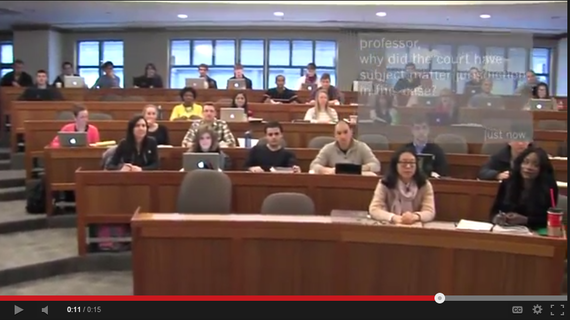14 Google Glass Innovative Uses In Education
Google Glass is finding its way into almost every industry, with applications in healthcare, construction, gaming, tourism, and law enforcement. Gartner believes that smartglasses will save the field service industry $1 billion per year. One domain that is especially ripe for Google Glass innovation is education. I spoke with Brian A. Rellinger, CIO Ohio Wesleyan University about the ways Glass can be used on campus. The OWU Information Services Department purchased Google Glass in March, 2014 and started brainstorming about ways to use it with a cross section of campus groups. Since Glass is a new technology, the ideas continue to multiply as individuals gain hands-on experience. Even so, the faculty, staff, and students at OWU came up with a diverse list of initial ideas.

Brian Rellinger, CIO Ohio Wesleyan University
Based on the OWU list, here are 14 ways that Google Glass can improve higher education. Each idea may not be a fit for every campus, but hopefully it can help start the discussion for new or potential Glass owners. Do you have more ideas? Feel free to tweet them to us at @ValaAfshar and @rellinb.
- Incorporate Glass into college athletics. Football, baseball, basketball players, for example, can wear Glass during practice. The coach can give them realtime instructions. Players can view recordings to understand their head and body movements. Also, spectators can join the hangout to experience the sport from the player's first person perspective. Tennis and football QB examples.
- Ask alumni or others to wear Glass during performances in the arts and other intense professional activities, so students can experience the performance and participate remotely. See video with chef Roy Choi.
- Give students realtime interactive (and subsequently recorded) field trip experiences to difficult-to-reach places like the Large Hadron Collider (CERN); the Oval Office; a war zone; Federal Reserve Bank; Mt. Everest; Tibet, Papua, New Guinea; Cheyenne Mountain; Antarctica; Egyptian pyramids.
- Professor can wear Glass during lectures and open up a hangout so students can participate remotely. Glass can also provide a back-up resource to the professor to call up more detailed impromptu content as required by student questions. Can also be used by student teachers to help them as they learn to teach.
- Experiment with QR codes around campus to display location specific information, such as classes taught in a particular room. Google Glass quickly interprets the QR codes.
- Students sitting in lectures can use Glass to help take notes and bookmark important passages, as well as to view extra-classroom content provided to them by the lecturing professor. Glass can provide realtime language translation for foreign students.
- Lend to visiting students and prospects for self-guided tours of the campus. Glass will (with added functionality) automatically point out landmarks within the student's vision, explain history, and answer questions.
- Invite remote prospective students to tour the campus via a live Hangout with a Glass-wearing guide.
- Provide a simulated (virtual reality) experience to students of intense events such as in an operating room, on the athletic field, or in outer space. In these cases, the wearer is the one directly participating in the simulation, rather than watching as someone else participates.
- Provide live first-person experience of graduation, by having a student wear Google Glass throughout the ceremony and convocation.
- Professors can use Glass to receive questions from students during their lectures. Andrew Perlman of Suffolk University Law School describes how students who may be reluctant to speak up in class can text their questions directly to the professor who views the texts with Glass. It is even possible to poll the student audience to see if they are grasping difficult concepts during the lecture.
- Professors and instructors can use a Glassware app like Speech Helper to view their slide notes during a slide show presentation and can also control the slides ("Ok, glass. Slide Remote").
- Create a course or club to teach students how to design Glassware apps.
- Develop a Glassware app to take attendance and pull recent grades of students to assist faculty in the classroom.

Suffolk University Glass Video
There is another aspect to Google Glass and other wearables in education that has a disruptive effect on what students are taught and how they are tested. Stephen diFilipo, CIO at Cecil College, notes that, "With wearables every test becomes open book. The phrase don't teach that which can be Googled has become a familiar cry for those advancing education reform."
Melissa Woo, Vice Provost for Information Services and CIO at the University of Oregon and an early Google Glass Explorer stresses that higher education has a vital role to play in the field of wearable computing, that goes beyond just using the technology: "Higher education is an important area for experimentation with Glass and other wearables, not only because they enhance teaching, but because they help us understand how we should best interact with and incorporate these technologies into our society's future."
